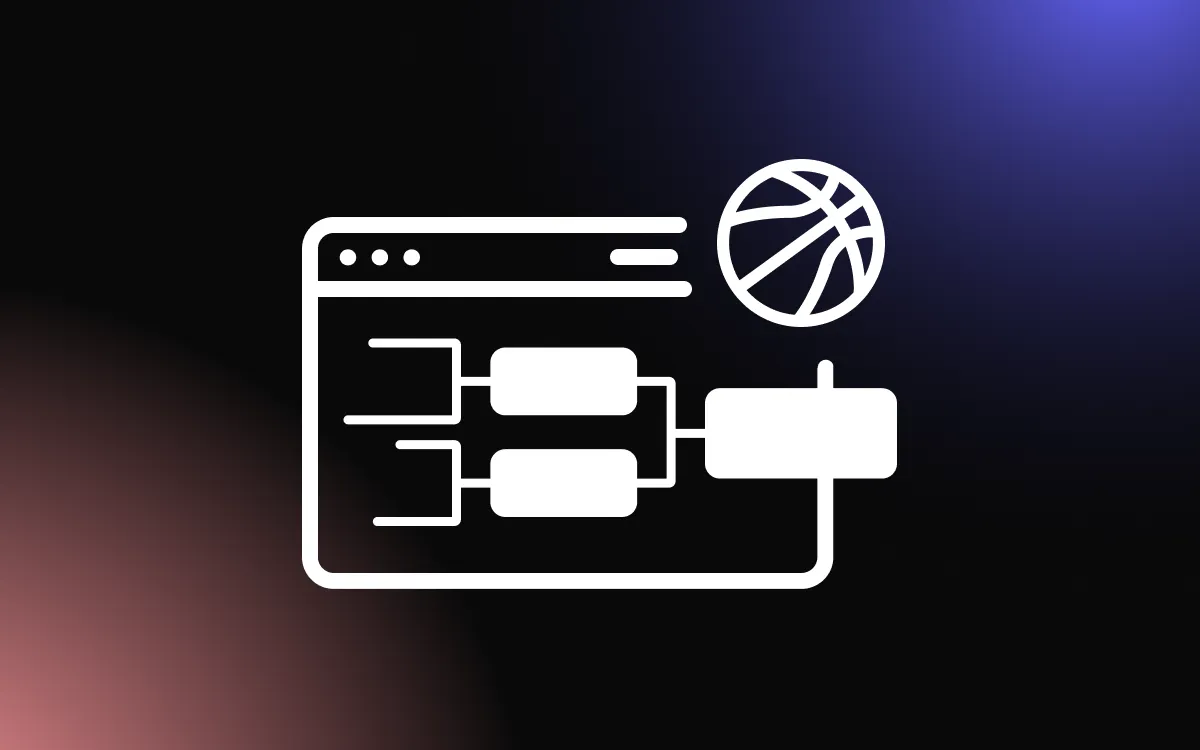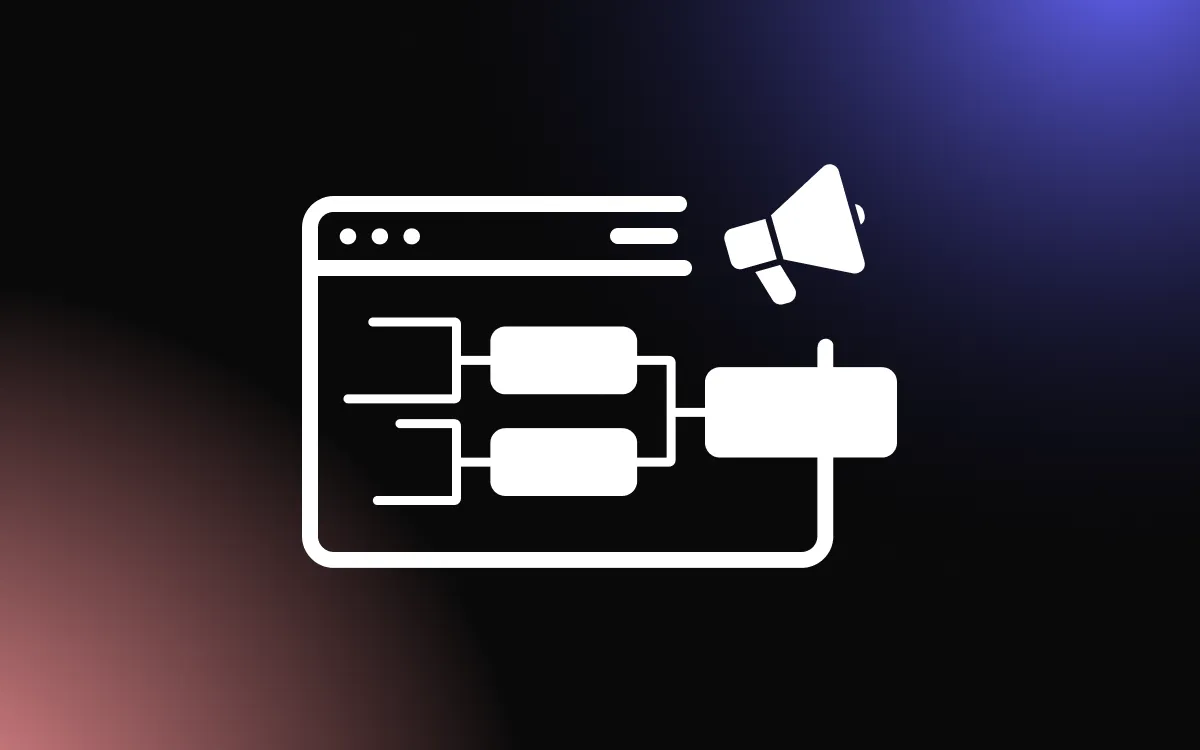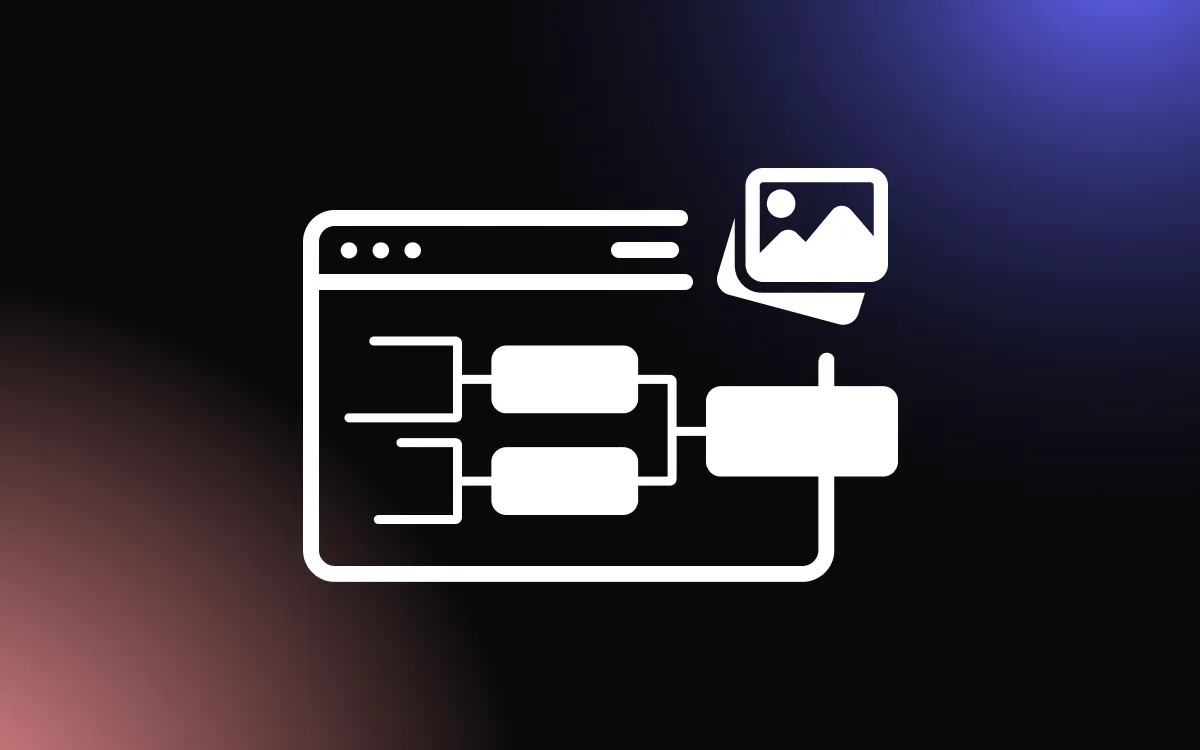
Navigating the world of single-elimination brackets can seem like a daunting task for many individuals. This comprehensive guide is designed to break down the complexities and intricacies of single-elimination brackets, making them more accessible and understandable for everyone.
The article delves deeply into the essentials, offering insight into the structure, seeding, and progression, ensuring readers have a solid foundation to effectively utilize and enjoy single-elimination tournaments. Also, this article will suggest a powerful bracket-making tool for you to use.
Understanding Single-Elimination Brackets
Definition and Overview
A single-elimination bracket, sometimes referred to as knockout or sudden death bracket, is a type of tournament where the loser of each match-up is immediately eliminated from the tournament. Each contestant is matched up with another, and the winner progresses to the next round.
This continues until only one contestant remains, ultimately crowned the champion. This structure is straightforward and easy to understand, making it a popular choice for organizing tournaments.
It ensures that the event progresses swiftly, keeping excitement levels high and avoiding the logistical challenges of coordinating numerous rounds and matches. While its simplicity and efficiency are clear strengths, it's worth noting that a single mistake or bad day can eliminate a top contender, perhaps not always identifying the “best” participant as the champion.
Contexts of Use: Sports, Tournaments, and Competitions
In various realms of competition, the single-elimination bracket is a preferred format. It's extensively used in sports tournaments, from local community games to professional levels. In events such as the FIFA World Cup, NCAA basketball tournaments, and major tennis tournaments, participants battle it out in single-elimination brackets.
The allure lies in its clear, uncomplicated path to victory and the heightened tension and thrill it brings to each match. The single-elimination format is not just confined to sports; it's equally popular in other competitive settings like esports, board game tournaments, and other skills and performance-based competitions.
Here too, it delivers high levels of engagement and suspense, making every match crucial and every moment potentially decisive. This model's straightforwardness helps both organizers and participants remain clear about the tournament progression, fostering an environment of transparency and anticipation.
Structure of Single-Elimination Brackets
Bracket Layout and Seeding
The structure of a single-elimination bracket hinges largely on its layout and seeding. The bracket layout is typically a tree diagram that showcases the series of games and their consequent rounds.
Participants are “seeded,” or ranked, and strategically placed in the bracket to ensure that higher-ranked competitors do not face each other in the initial rounds. Seeding helps in maintaining a balanced level of competition and keeps the anticipation and excitement going as the tournament progresses.
The higher-seeded participants are generally matched with lower-seeded or unseeded competitors, providing them an advantage as a reward for their superior ranking.
Handling Odd Numbers of Participants
One challenge that single-elimination tournaments might face is handling an odd number of participants. This situation can be managed by giving a “bye” to one or more participants. A “bye” is a free pass that allows a participant to advance to the next round without competing.
This system ensures that every round has an even number of competitors, maintaining the structure’s integrity. However, deciding who gets a bye can be a contentious issue, and organizers must handle it with fairness and transparency.
Examples of Single-Elimination Bracket Structures
Single-elimination brackets can be seen in various contexts and scales. For instance, a local basketball tournament might use a simple 8-team single-elimination bracket. In this setup, four initial matches determine the semifinalists, who then compete to determine the two finalists. These finalists then vie for the championship.
On a larger scale, the NCAA Men’s Basketball Tournament employs a 68-team bracket, filled with multiple rounds leading to the much-anticipated championship game. This extensive structure maintains the essential single-elimination format, demonstrating its scalability and adaptability to different sizes and levels of competition.
The examples underline the flexibility and widespread application of single-elimination brackets in diverse competitive scenarios.
Advantages of Single-Elimination Brackets
Time-Efficiency
One of the most evident advantages of single-elimination brackets is their time-efficiency. The format ensures the tournament progresses rapidly, with half of the participants being eliminated after each round.
This expediency is beneficial for both organizers and participants. Organizers can plan a concise, streamlined event, ensuring that it remains engaging and manageable. Participants, on the other hand, can enjoy a swift and decisive competition, where results are determined quickly, and a champion is crowned without undue delay.
Simplicity and Ease of Understanding
The structure of single-elimination brackets boasts simplicity and ease of understanding, making it a favorable choice for many. There is a clear, linear path from the start of the tournament to the championship match.
Participants and fans alike can easily follow the progression of the competition, keeping track of wins and losses without confusion. This straightforward format eliminates the need for complicated scheduling, intricate point systems, or multi-round robin matches, making the organizational process less cumbersome and more accessible to a broad audience.
High Stakes, Exciting Competition
Single-elimination brackets inherently produce high-stakes and thrilling competition. Each match holds significant weight, as losing means immediate elimination from the tournament. This setup keeps participants on their toes, ensuring maximum effort and strategic gameplay in every round. Fans and spectators are treated to intense, edge-of-the-seat action, as every match could potentially make or break a competitor's journey to the championship.
The anticipation of unexpected upsets and formidable showdowns keeps the excitement palpable, enhancing the overall experience for everyone involved. In essence, the single-elimination format encapsulates the very essence of competition, showcasing determination, skill, and resilience in every match, and culminating in the crowning of a deserving champion.
Challenges and Criticisms
Lack of Second Chances for Participants
One significant challenge of single-elimination brackets is the absence of second chances for participants. With the “one loss and you’re out” system, a single error, off-day, or unforeseen circumstance can abruptly end a participant’s journey in the tournament. This aspect can be particularly disheartening for competitors who might otherwise excel and recover in a double-elimination or round-robin format.
The lack of a second chance can, at times, lead to questions about the fairness and comprehensiveness of single-elimination tournaments in accurately determining the best participant.
Potential for Early Strong Match-Ups
Another criticism lies in the potential for early strong match-ups, especially if seeding is not effectively implemented. Two top competitors might face each other in the initial rounds, leading to an early exit for one, and potentially making the subsequent rounds less competitive and engaging.
This scenario can rob the tournament of a highly anticipated championship match between the strongest participants and may result in a less exciting viewing experience for fans.
Strategies to Mitigate These Challenges
Despite these challenges, there are strategies to mitigate them and ensure a fair, exciting tournament. Proper seeding is crucial, ensuring that the highest-ranked participants do not face each other in the early rounds, preserving the anticipation and competitiveness for the latter stages of the tournament.
Implementing a comprehensive and transparent seeding process can help alleviate concerns and enhance the tournament structure. Additionally, providing a clear and detailed explanation of the tournament format and rules to all participants can ensure everyone is on the same page, minimizing dissatisfaction and controversy. While it is impossible to please everyone, addressing these challenges head-on with fair and transparent strategies can significantly enhance the single-elimination tournament experience for all involved.
Creating a Single-Elimination Bracket
Tools and Software for Bracket Creation
In constructing a single-elimination bracket, various tools and software can simplify the process, ensuring accuracy and efficiency. Numerous online platforms provide customizable bracket templates suitable for different types and sizes of tournaments. These platforms often offer additional features like automated seeding, real-time updates, and easy sharing options, making the management of the tournament smoother.
For example, websites like Challonge and Bracket HQ allow organizers to create, manage, and share their brackets with participants and fans easily. Leveraging such tools can help organizers focus on other logistical aspects of the tournament, ensuring a well-organized and successful event.
Tips for Effective and Fair Bracket Design
An effective and fair bracket design is paramount in ensuring the success of a single-elimination tournament. Proper seeding is a crucial aspect, helping to avoid early match-ups between top contenders and maintaining the competition's excitement and integrity throughout. It’s essential to have a clear and transparent seeding process, often based on participants’ rankings, past performance, or other relevant criteria.
This transparency not only upholds the fairness of the tournament but also helps in minimizing disputes and confusion. Additionally, handling odd numbers of participants judiciously by providing byes in a transparent manner helps maintain the competition's equilibrium, ensuring every participant feels treated fairly.
Ensuring Clarity and Accessibility in Bracket Design
Clarity and accessibility in bracket design are essential to make the tournament easily understandable and navigable for both participants and fans. Clear, readable, and easily accessible brackets ensure everyone can quickly grasp the tournament’s structure and progression.
It's beneficial to use simple and intuitive visuals in the bracket design, avoiding overly complicated or cluttered layouts. Make sure to provide access to the bracket to all relevant parties, keeping it updated in real-time as the tournament progresses. Utilizing online platforms can aid in this, allowing participants and fans to check the bracket anytime, anywhere, keeping them engaged and informed throughout the tournament.
Navigating Single-Elimination Bracket Competitions
Preparation and Strategy for Participants
Navigating single-elimination bracket competitions requires diligent preparation and a robust strategy for participants. Understanding the significance of each match is essential as each game holds the potential of progressing further or being eliminated.
Participants should be well-versed in the tournament's structure, seeding, and schedule to plan their approach effectively.
Rigorous practice, thorough analysis of opponents, and a solid game plan are paramount to enhance their chances of success. It's also crucial for participants to be mentally prepared for the high-stakes nature of the competition, keeping focus and composure in every match to optimize performance.
Ensuring Fair Play and Sportsmanship
In single-elimination contexts, the heightened competitiveness should never overshadow the importance of fair play and sportsmanship. Organizers must emphasize these values, setting clear expectations and guidelines for all participants. Effective monitoring and adjudication mechanisms should be in place to handle disputes and ensure adherence to the rules.
Participants, in turn, should prioritize fairness and respect in their conduct, recognizing that their behavior impacts the competition's integrity and enjoyment for everyone involved. Maintaining high standards of sportsmanship contributes to a positive, respectful tournament atmosphere, enhancing the experience for participants, organizers, and fans alike.
Handling Wins and Losses in Single-Elimination Contexts
Handling wins and losses gracefully is a crucial aspect of navigating single-elimination tournaments. For winners, it's essential to celebrate victories respectfully, acknowledging opponents' efforts and maintaining humility. Understanding that the journey is filled with various challenges is vital, keeping the focus on the upcoming matches and continuous improvement. For those facing elimination, processing the loss constructively is important.
It's an opportunity to reflect on performance, identify areas for growth, and garner lessons for future competitions. Regardless of the outcome, every participant should view the tournament as a valuable learning and development experience, contributing to their long-term growth and enhancement in the field.
In essence, effectively navigating single-elimination bracket competitions involves meticulous preparation, upholding sportsmanship, and handling outcomes with grace and perspective, ensuring a meaningful and enriching tournament experience.
Beyond Single-Elimination: Exploring Alternatives
Double-Elimination Brackets
Double-elimination brackets offer a distinct alternative to the single-elimination format. In this setup, participants are not immediately ousted after a loss. They are given a second chance in a lower bracket, where they continue to compete against other teams that have also lost a match.
This format provides teams with an opportunity for redemption, allowing them more playtime and the chance to learn and adapt from previous mistakes. Double-elimination brackets can create a more comprehensive and forgiving tournament experience, ensuring that a single loss does not entirely eliminate a competitor's chances.
Round-Robin Tournaments
Round-robin tournaments represent another alternative, wherein each participant plays against every other participant an equal number of times. This format is particularly beneficial in ensuring that each team or player gets ample opportunity to demonstrate their skills and strategies across multiple matches.
It also allows for a more nuanced assessment of each participant’s capabilities and performance, as the outcome is not based on a single match but a series of games.
Pros and Cons of Alternative Formats
While alternative formats like double-elimination and round-robin tournaments offer more opportunities for participants, they come with their own set of challenges. Double-elimination brackets can be more complex to organize and manage, and they typically require a longer time frame to complete. This could potentially lead to decreased excitement and engagement from participants and spectators.
On the other hand, round-robin tournaments, while providing a thorough evaluation of participants' skills and strategies, can also be time-consuming and logistically challenging. Despite these challenges, the choice of format depends on the specific goals and context of the tournament. Weighing the pros and cons, organizers can select a format that aligns best with the tournament's objectives, ensuring a competitive, enjoyable, and fulfilling experience for all involved.
Conclusion
In summary, mastering the nuances of single-elimination brackets is essential for anyone looking to host or participate in a seamless and equitable tournament. This comprehensive guide has provided an extensive exploration into the world of single-elimination brackets, offering valuable insights and tools to enhance the tournament experience for all involved.
As the final whistle blows on this guide, readers are now well-equipped with the knowledge and confidence to navigate, organize, and enjoy the exciting world of single-elimination tournaments, ensuring each event is a resounding success.


